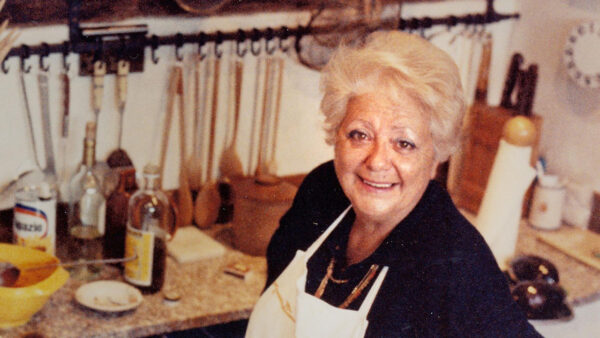
Endovascular Leg Therapies
Sept. 30, 2013
Learn the risk factors of a sweeping national epidemic with The Latest Procedure: Endovascular Leg Therapies which premiered Monday, September 30, 2013 on Eight, Arizona PBS. This latest episode in Eight’s award-winning original documentary series takes viewers into an operating room to witness new, less invasive procedures for peripheral artery disease (PAD) – alternatives that can literally save patients’ legs.
Eight hopes to encourage patients across the United States to research and understand the risk factors of this disease. This documentary allows viewers to witness live endovascular treatment options of leg artery stenosis, which are less invasive than previous options for this condition.

PAD is caused by blockages in blood vessels that decrease blood flow to the legs and feet, and nearly 18 million U.S. citizens suffer from it. In later stages it can cause lower extremity wounds or sores that won’t heal, darkening skin, muscle pain, swelling, cramping, numbness in patient’s feet or legs, or in 180,000 cases annually in the U.S. alone, limb amputation, according to The Sage Group, a research and consulting company specializing in blood vessel disease of the lower limbs. In addition, research shows an alarmingly increased mortality rate of amputee patients, with most patients seeing their normal lifespan decreased by 50 percent.
This newest episode of Eight’s The Latest Procedure series will discuss subjects such as the causes of peripheral artery disease (also sometimes known by the more general name PVD, peripheral vascular disease), the economic impact, diabetes, present and future PAD treatments including non-surgical therapies and limb preservation treatments with Dr. John Pacanowski, Dr. Luis Leon, and Dr. Miguel Montero of the Tucson Medical Center and Pima Vascular, along with host Jim Cissell. Dr. Pacanowski and his colleagues perform endovascular, catheter-based therapies including small intraluminal cutting devices (atherectomy), balloon angioplasty, and stent implantation. The physicians also utilized new techniques like pedal access (delivery of devices via the foot), blockage crossing catheters (crossers), and ultrasound-guided vessel access.
The documentary will also inform patients of some of the risk factors for PAD, including diabetes, tobacco use, age, diet, and high blood pressure or cholesterol levels. The good news is that in many cases, addressing these blockages at their early stages can ease or even eliminate uncomfortable lower leg complications and the need for amputation.The economic burden of PAD on the country’s medical system is staggering. A recent study concludes that four million diabetics in the U.S. suffer with foot ulcers from compromised vasculature, with medical treatments on this patient population representing $70-$80 billion.
“Eight’s goal with The Latest Procedure: Endovascular Leg Therapies is to push patients to be smarter healthcare consumers and better caretakers of their bodies as they increasingly assume a greater proportion of their own healthcare costs,” says Eight, Arizona PBS General Manager Kelly McCullough.
The Latest Procedure: Endovascular Leg Therapies marks the third episode of Eight’s locally produced series joining award-winning TLP: Anterior Hip Replacement and the more recent TLP: Transcatheter Aortic Valve Replacement. Each program is also available on-demand on our Eight website once it has aired, and they can be viewed there anytime. The Latest Procedure web resources also include links to further information about the disease and the latest available treatments, medical risk assessment questionnaires, and other resources, free of charge, and accessible 24/7.
LEGAL DISCLAIMER FOR THE LATEST PROCEDURE (TLP) WEBSITE AND PROGRAM
The contents of the TLP Website and the TLP Program – such as text, graphics, images, opinions, statements, information obtained from TLP’s licensors and/or participants and other material contained on the TLP Website or in the TLP Program (collectively, “Content”) – are for informational purposes only. The Content is not intended to be a substitute for professional medical advice, diagnosis or treatment. Always seek the advice of your physician or other qualified health provider with any questions you may have regarding a medical condition. Never disregard professional medical advice or delay in seeking it because of something you have read on the TLP Website or have seen/heard in the TLP Program!
If you think you may have a medical emergency, call your doctor or 911 immediately. TLP, Eight-Arizona PBS, Arizona State University and the Arizona Board of Regents do not recommend or endorse any specific tests, physicians, products, procedures, opinions or other information that may be mentioned on the TLP Website or in the TLP Program. Reliance on any information provided by TLP, TLP’s licensors, others appearing on the TLP Program or on the TLP Website, or other visitors to the TLP Website is solely at your own risk.























